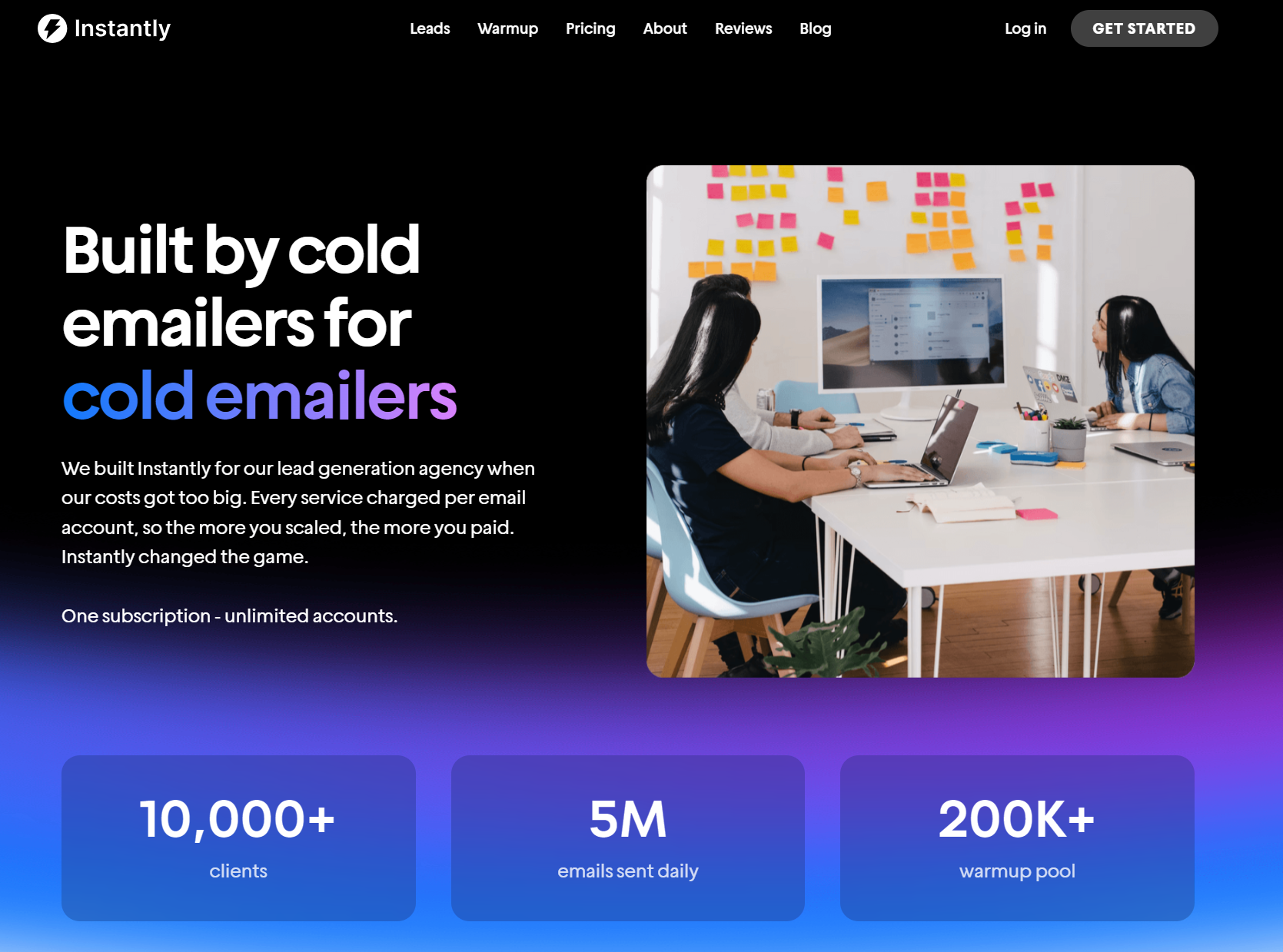It’s a question that every business owner asks themselves at some point. “How can I get more clients?” You’re hungry to expand. You know that you have the capacity to deliver, but you don’t have enough people to work with. What you need is more clients.
Attracting and converting more clients is an essential task for almost every business. To be successful, you need to engage with potential clients in a way that resonates and nurtures a relationship. One of the best ways to build a new client base and develop connections is through email. It’s direct, cost-effective, and allows for a personal touch.
In this article, we’ll share how you can best use email to get more clients. It starts with gaining an understanding of your target market. We’ll then explore how you can build an email list, which you can then send campaigns that convert to.
- Crafting a compelling email campaign that wins clients.
- Developing an online presence.
- Measuring the success of your outreach.
Understanding Your Target Market

Before you can begin creating client-winning campaigns or generating follow-up strategies, you have to start with your target market. These are the people that you want to work with or that you want to buy your products.
Once you understand your target market, you’ll be able to make the most out of email outreach. When you build a campaign from a position of empathy, you can tailor it to resonate with the recipients. That means you need to consider what they genuinely want to receive. How can you deliver value to them? This process needs to be of mutual benefit to both you (the business) and the recipient.
The process of understanding your target market begins by looking at your current client base. Spend time identifying what common characteristics they have in both demographics and interests. There are almost always some patterns in these and their purchasing habits. This information is typically gathered through customer interviews, surveys, or quantitative analytics.
As soon as you’ve identified these traits, you can begin a process of audience segmentation. In this instance, specifically email list segmentation. This is the process of splitting the larger list into smaller defined groups. The smaller the groups, the more targeted and tailored your campaigns will be. This means considerably more time and effort in creating additional content and materials. The payoff, however, is worth it.
Many businesses find themselves skipping this step. Not purposefully, but they rely on competitor information or their gut feeling. Don’t fall into this trap. When you’re wondering how to get more clients, it’s important that you understand your own specific audience.
Building a Powerful Email List
The next step is to create an email list. Without one, you’ll just be shouting into the void or talking to a brick wall. There isn’t going to be any action or response. You need to get your message to real people so that you can begin to build relationships.
Yes, volume is important, but what’s more important is that your list is of high quality. You need willing recipients who want to hear from you. That’s achieved through a carefully managed, consent-based process where you collect high-quality members.
Most people won’t be willing to give away some of their personal information for nothing. In this instance, that’s their email address. They will want something in return so that there is some mutual gain. The value you give them in exchange could be a number of different things. You might offer an eBook, a free webinar, or a discount code. The key is it has to be something that they genuinely want. This means they feel it's a fair and reciprocal deal. They're also more likely to be genuine subscribers, with a chance of being converted.
These signups usually happen on your website. Strong call-to-actions should guide the user toward your offer. You’ll then need a simple, transparent sign-up process that allows them to opt into marketing. Gaining this consent is vital. Without it, you’re at risk of breaking GDPR or CAN-SPAM regulations. Plus, it builds a sense of trust with your audience.
Once you have the lead magnets embedded into your website, use your other marketing channels to drive traffic toward them. Social media is a powerful way of directly connecting with your audience. That’s especially true if you use advertising to target a specific audience segment.
Crafting Compelling Email Campaigns

Creating an email campaign from scratch is no small undertaking. We strongly recommend that you use templates or examples where possible. We’ve previously created banks of templates, including:
- Cold Email Templates
- Cold Email Templates for Sales
- B2B Sales Email Templates
- Email Marketing Templates
- Follow-Up Email Templates
Plus, if you’re using Instantly as your email marketing tool, you can use whole sequence templates. That means the structure of your automated campaign is built for you instantly!
Engaging Email Content
The content you create needs to be engaging and resonate with the audience. As you did at sign-up, you need to continue to deliver value. That could be in the form of information, insightful thoughts, and updates. It could also include exclusive offers. Or anything that you think will genuinely benefit the recipient.
As you write the content of the email, be mindful and respectful of their time. They won’t be inclined to read your email, let alone work with you if it’s a long essay. Instead, focus on using clear, concise wording that gets your message and point across succinctly. Then, give them a simple call-to-action to guide them on the next steps.
Personalization Builds Engagement
Always build in personalized touches to your email. A good starting point is their name and company details, but great personalization goes a lot further than that. The best personalized email campaigns will incorporate specific details about the individual recipient. Perhaps you met each other at a conference and can mention that. Maybe you have a mutual acquaintance that you can name-drop.
If you are working at scale, this level of personalization is difficult to achieve. Therefore, consider the specific audience segment and tailor the content to them. If you’re targeting parents or families, consider how they will use your products or services compared to a young singles segment.
Timing and Frequency
There’s a careful balance to be achieved in how often and when you send your emails. If you get trigger-happy with the send button, then you’ll quickly overwhelm the recipients, and you’ll lose subscribers. If you don’t send frequently enough, they won’t have a chance to get to know you and your content. Eventually, they’ll forget about you completely.
Knowing the best time to send emails takes research. It varies depending on demographics and your own sector. Your best option is to test. Try sending the same content to similar audiences at different times of the day. This is a form of A/B email testing that can quickly give you tangible results and insights.
Enhancing Online Engagement and Conversion
There are certain tactics that you can employ to maximize the chance that users will engage with you online. These methods will help you to win more subscribers and also encourage those interacting with you to become customers.
Create a Cohesive Brand
Wherever your business is online, you should deliver a similar brand experience. That means using the same colors, logos, and brand voice across every channel. That includes email. You can use subtle changes in tone depending on the segment that you’re targeting, but the overall messaging should remain consistent. This helps people build recognition and an affinity with the brand.
Use Your Analytics for Insight
A powerful route to winning more clients comes from your data. Explore your analytics and look for patterns in recipient and consumer behavior. This could be through social media, web visits, or an email marketing campaign. Understanding these insights allows you to make data-driven decisions about future outreach and campaigns.
Leverage Interactivity for Sign-Ups
Sign-ups on your website don’t have to be exclusively through forms. Forms are useful, but they’re not the most exciting website feature. There are other options you could employ. You might decide to use:
- Chatbots
- Interactive quizzes
- FAQs
- Virtual Events
It’s difficult to predict which will achieve the best results for your audience. The best advice is to test and see. You’re most likely to achieve success if you ensure that whichever method you use delivers value.
SEO for Email List Building
SEO, or search engine optimization, is the process of driving traffic to your website. This is done by achieving higher rankings on search engines. Think about your audience. Tailor your website content to be educational, authoritative, and trustworthy. This will show that your content is high-quality and it stands the best chance of being ranked.
You’ll also need to focus on the more technical side of SEO, including:
- Keyword identification and inclusion
- Meta descriptions and titles
- Links - both internal and external within content
- Backlinks from other authoritative websites
- Page speed
Naturally, everyone wants their website to be on top of Google. That doesn’t, however, guarantee newsletter sign-ups. Your website needs to be in a position to convert users when they arrive. Ensure you clearly signpost how a user can share their email with you.
Email Automation and Follow-Up Strategies
There’s no hiding from the fact that email marketing is a lot of work. It takes considerable time and effort to pull off a successful campaign, and that’s after you’ve collated a significant email list. Thankfully, there are ways for you to make the most of those campaigns and save some time while doing so.
Email Automation

When you use an email marketing tool such as Instantly, you gain access to powerful automation and sequences. You no longer have to worry about sending individual emails. All you need to do is consider the trigger and launch the campaign.
An example would be automatically sending a welcome email when a new subscriber joins your list. Depending on how and where they signed up, you can tailor the email accordingly.
Sequences are a powerful way of nurturing a relationship with the subscriber. That doesn’t mean bombarding them with product information. Instead, think about their challenges and pain points. Then, offer them carefully selected solutions. Show that you can identify with their situation and offer to help. If that’s through your products, then all the better.
Effective Follow-Up Techniques
Where sequences follow a set pattern once a subscriber enters the flow, follow-ups tend to be more specific to the subscriber. Follow-ups are emails sent after an attempt at initial contact. They may not have had time or wanted to respond in the first place. This is another attempt to build a connection.
Missed connections are disappointing. However, don’t be tempted to endlessly bombard someone who isn’t responding. Respect their silence and eventually remove them from your list. If they’re not engaging with you, they’re not worth contacting anyway.
Key Takeaways
These email marketing tactics should help you in your quest to learn how to get more clients. It all starts with your audience and your understanding of them. Follow these steps and suggestions, then before you know it, you’ll have client after client knocking on your virtual door.
- Always focus on quality over quantity when it comes to your email list.
- Use your analytics to help you make data-driven decisions.
- Segmentation ensures that your messaging is always tailored to the recipients.
Managing extensive lists, crafting personalized content, and creating powerful automated sequences is all in a moment’s work for Instantly. Outreach subscriptions start from just $37 a month, but you can start today when you sign up for a free trial.




